Zilog Z-80 - Immortal Eighties
The early years of the personal computer era, which began even before the legendary IBM PC appeared in 1981, largely determined the market picture that developed in the next decade, when the growing Intel introduced products to the market that almost instantly grew with many compatible analogs - both more affordable and more advanced, technically interesting. But long before companies crossed their swords in the fight for the first 186 customers and their followers, the competition touched the first key chip in the history of the computer industry - Intel 8080.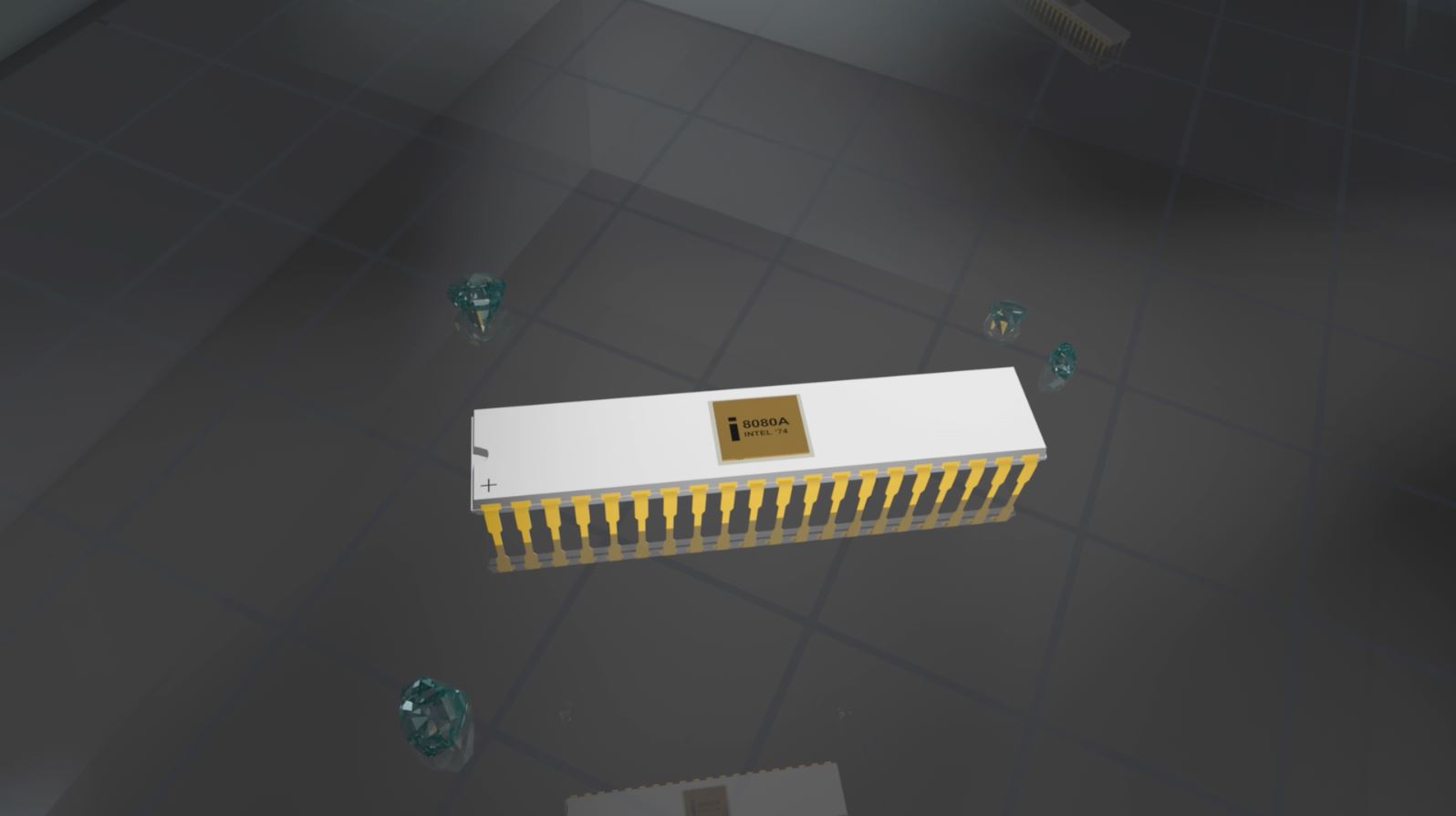 Intel 8080The output of the Intel 8080 processor has become a catalyst for the development of the development and production of microprocessors, which have found application in various fields and fields. The release of various 8-bit solutions (such as Motorola 6800 or MOS Technologies 6502), as well as the production of fully compatible clone solutions (produced, in particular, by AMD), determined the needs of the market in the mid-70s, which can be partially called and the reason for the appearance of the Z-80.After leaving Intel, Federico Fagin and Ralph Ungermann began to discuss what products they could develop. Ungermann was attracted by the idea of creating electronic typewriters. And Fagin wanted to use the concept of the original 4004 microprocessor in a single-chip microcontroller that would contain all the memory and input / output devices with a processor on a single silicon element.
Intel 8080The output of the Intel 8080 processor has become a catalyst for the development of the development and production of microprocessors, which have found application in various fields and fields. The release of various 8-bit solutions (such as Motorola 6800 or MOS Technologies 6502), as well as the production of fully compatible clone solutions (produced, in particular, by AMD), determined the needs of the market in the mid-70s, which can be partially called and the reason for the appearance of the Z-80.After leaving Intel, Federico Fagin and Ralph Ungermann began to discuss what products they could develop. Ungermann was attracted by the idea of creating electronic typewriters. And Fagin wanted to use the concept of the original 4004 microprocessor in a single-chip microcontroller that would contain all the memory and input / output devices with a processor on a single silicon element.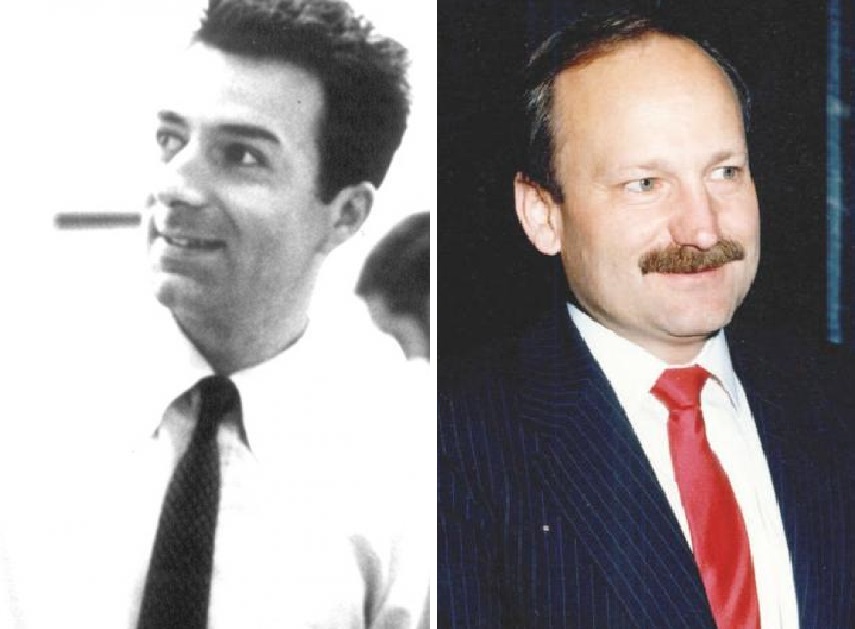 Federico Fagin (left) and Ralph UngermannRumors reached the news line from Electronics News, and a big article came out in the next issue of the commercial magazine that Fagin and Ungermann were going to do processor business together.A week later, an unexpected visitor came to the office they rented in the prestigious Los Altos area, a few miles from Palo Alto. He introduced himself as an employee of a subsidiary of Exxon, the world's largest oil company, founded to invest in start-up companies. Exxon Enterprises, as his company was called, became interested in Fajin and Ungermann. If they want to develop a new microprocessor, the company could support them.
Federico Fagin (left) and Ralph UngermannRumors reached the news line from Electronics News, and a big article came out in the next issue of the commercial magazine that Fagin and Ungermann were going to do processor business together.A week later, an unexpected visitor came to the office they rented in the prestigious Los Altos area, a few miles from Palo Alto. He introduced himself as an employee of a subsidiary of Exxon, the world's largest oil company, founded to invest in start-up companies. Exxon Enterprises, as his company was called, became interested in Fajin and Ungermann. If they want to develop a new microprocessor, the company could support them. The deal was concluded quickly. The company received a controlling stake of 51% in exchange for $ 1.5 million.Ungermann came up with a good name for a new business - “Zilog”. This meant that the company considered itself “the last word [Z] in the integrated [I] logic [LOG]”.Two months later, Fajin came up with another idea. He watched the fate of his old project - the Intel 8080 processor. From enthusiastic assessments of commercial publications, from the fact that companies across America are starting to use it, Fagin realized that it would be foolish not to make capital on the wave of a boom that began for general-purpose microprocessors. In December 1974, he persuaded Ungermann to leave the project with the controllers and switch to developing an improved version of the 8080 chip.Trying to restore ties with Andy Grove, Fagin came to Intel with his ideas and proposed to organize the production of the improved 8080th under a contract with Intel. However, his proposals were rejected.Later, Fajin was approached by Masatoshi Shima, an engineer who supervised the 4004 project, and then transferred to Intel. Since Sima was developing a detailed drawing of the 8080th, Fajin gladly invited him.
The deal was concluded quickly. The company received a controlling stake of 51% in exchange for $ 1.5 million.Ungermann came up with a good name for a new business - “Zilog”. This meant that the company considered itself “the last word [Z] in the integrated [I] logic [LOG]”.Two months later, Fajin came up with another idea. He watched the fate of his old project - the Intel 8080 processor. From enthusiastic assessments of commercial publications, from the fact that companies across America are starting to use it, Fagin realized that it would be foolish not to make capital on the wave of a boom that began for general-purpose microprocessors. In December 1974, he persuaded Ungermann to leave the project with the controllers and switch to developing an improved version of the 8080 chip.Trying to restore ties with Andy Grove, Fagin came to Intel with his ideas and proposed to organize the production of the improved 8080th under a contract with Intel. However, his proposals were rejected.Later, Fajin was approached by Masatoshi Shima, an engineer who supervised the 4004 project, and then transferred to Intel. Since Sima was developing a detailed drawing of the 8080th, Fajin gladly invited him. Masatoshi Shima Thenew Zilog chip was created faster than Fajin and Ungermann expected. Pursuing a chip 80 hours a week, Fagin completed the development of its architecture in less than nine months.At first, Zilog united only three of them, several draftsmen helped them, so the question of their own chip production was not raised. Fagin drew a drawing on graph paper with a stylus; Sima monitored the creation of patterns from drawings. The ready-made set of templates was sent for production to Mostek, which separated from Texas Instruments, which at that time was one of Intel's strongest competitors in the MOS technology market. By March 1976, Zilog had a working device capable of conquering the world.The Z-80 is a third-generation single-chip microprocessor that operates with 8-bit data and 16-bit addresses. It contained 8500 transistors and was manufactured according to 3 micron technological standards. The crystal area was 22.54 mm 2 .The maximum amount of directly addressed memory and directly addressed output input space is 64 Kbytes (8080 microprocessor I / O space is 256 bytes).
Masatoshi Shima Thenew Zilog chip was created faster than Fajin and Ungermann expected. Pursuing a chip 80 hours a week, Fagin completed the development of its architecture in less than nine months.At first, Zilog united only three of them, several draftsmen helped them, so the question of their own chip production was not raised. Fagin drew a drawing on graph paper with a stylus; Sima monitored the creation of patterns from drawings. The ready-made set of templates was sent for production to Mostek, which separated from Texas Instruments, which at that time was one of Intel's strongest competitors in the MOS technology market. By March 1976, Zilog had a working device capable of conquering the world.The Z-80 is a third-generation single-chip microprocessor that operates with 8-bit data and 16-bit addresses. It contained 8500 transistors and was manufactured according to 3 micron technological standards. The crystal area was 22.54 mm 2 .The maximum amount of directly addressed memory and directly addressed output input space is 64 Kbytes (8080 microprocessor I / O space is 256 bytes).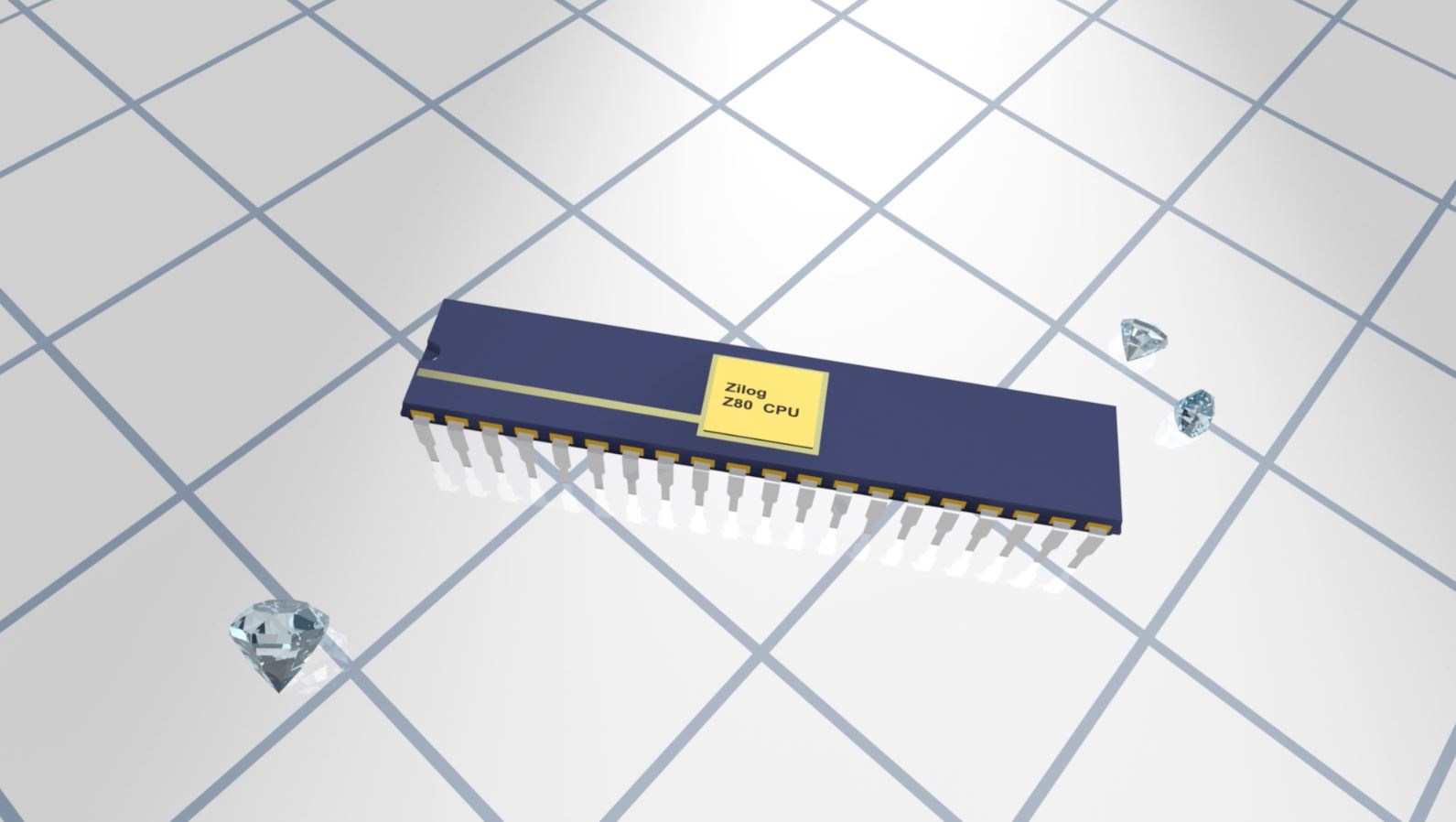 Zilog Z-80The Z80 microprocessor instruction system includes 158 instructions, of which 78 are completely similar to the 8080 microprocessor commands, although they have different mnemonics. In addition to the arithmetic-logical instructions traditional for 8-bit microprocessors, the Z80 has instructions that work with individual bits, as well as facilitating the processing of symbolic information.Microprocessors were produced with various operating clock frequencies from 2.5 to 8 MHz (8080A - 2.5 MHz), which provided very high performance at that time.Finally, a dynamic memory regeneration counter is implemented on the microprocessor chip itself, which can dramatically reduce the number of parts in simple microcomputers compared to the 8080.The Z-80 microprocessor was available in the 40-pin DIP package, the most common for eight-bit microprocessors. Unlike Intel's 8080 microprocessor, the Z-80 does not require specific additional circuits (a two-phase clock generator and a system controller) for its operation, which greatly simplifies the design of the processor module. In addition, for operation, the Z80 requires a single +5 V supply voltage instead of three voltages for the 8080 (+5, –5 and +12 V).With a price of just $ 200, the Z-80 turned out to be attractive for individual consumers who used to spend long nights at an amateur radio, and now, thanks to the triumph of large-scale integration of circuits, were messing with electronics. The Z-80 allowed them to think for the first time about how to assemble a computer themselves. In 1974, there were fewer computers in the world than airplanes in 1997. Therefore, assembling a computer at that time meant approximately the same as building a Boeing 767 in the backyard today. However, it was not much worse.Having spent $ 400 thousand to develop her chip, Zilog could not afford to generously pay for the work of an army of sales agents. Instead, the company bought a place in the Electronic News magazine and published a series of promotional articles.Due to the worldwide distribution of the Z80, Zilog has entered into many contracts to manufacture its microprocessors in various parts of the world. After entering the market in 1976, the main partners in the United States were Synertek and Mostek, which produced the first Z-80 series of processors (at the end of 1976 Zilog opened its own factories and provided the US market with its own resources). In Japan, companies such as Toshiba and Hitachi launched the Z80. Due to the incredible popularity and demand for the Z80, many analog manufacturers worked without a license, so in total less than half of all Z-80s produced were licensed products of Zilog or its official partners.In our country, the Z80 is best known for its Sinclair Spectrum gaming computer, which was extremely popular in the second half of the 1980s.
Zilog Z-80The Z80 microprocessor instruction system includes 158 instructions, of which 78 are completely similar to the 8080 microprocessor commands, although they have different mnemonics. In addition to the arithmetic-logical instructions traditional for 8-bit microprocessors, the Z80 has instructions that work with individual bits, as well as facilitating the processing of symbolic information.Microprocessors were produced with various operating clock frequencies from 2.5 to 8 MHz (8080A - 2.5 MHz), which provided very high performance at that time.Finally, a dynamic memory regeneration counter is implemented on the microprocessor chip itself, which can dramatically reduce the number of parts in simple microcomputers compared to the 8080.The Z-80 microprocessor was available in the 40-pin DIP package, the most common for eight-bit microprocessors. Unlike Intel's 8080 microprocessor, the Z-80 does not require specific additional circuits (a two-phase clock generator and a system controller) for its operation, which greatly simplifies the design of the processor module. In addition, for operation, the Z80 requires a single +5 V supply voltage instead of three voltages for the 8080 (+5, –5 and +12 V).With a price of just $ 200, the Z-80 turned out to be attractive for individual consumers who used to spend long nights at an amateur radio, and now, thanks to the triumph of large-scale integration of circuits, were messing with electronics. The Z-80 allowed them to think for the first time about how to assemble a computer themselves. In 1974, there were fewer computers in the world than airplanes in 1997. Therefore, assembling a computer at that time meant approximately the same as building a Boeing 767 in the backyard today. However, it was not much worse.Having spent $ 400 thousand to develop her chip, Zilog could not afford to generously pay for the work of an army of sales agents. Instead, the company bought a place in the Electronic News magazine and published a series of promotional articles.Due to the worldwide distribution of the Z80, Zilog has entered into many contracts to manufacture its microprocessors in various parts of the world. After entering the market in 1976, the main partners in the United States were Synertek and Mostek, which produced the first Z-80 series of processors (at the end of 1976 Zilog opened its own factories and provided the US market with its own resources). In Japan, companies such as Toshiba and Hitachi launched the Z80. Due to the incredible popularity and demand for the Z80, many analog manufacturers worked without a license, so in total less than half of all Z-80s produced were licensed products of Zilog or its official partners.In our country, the Z80 is best known for its Sinclair Spectrum gaming computer, which was extremely popular in the second half of the 1980s.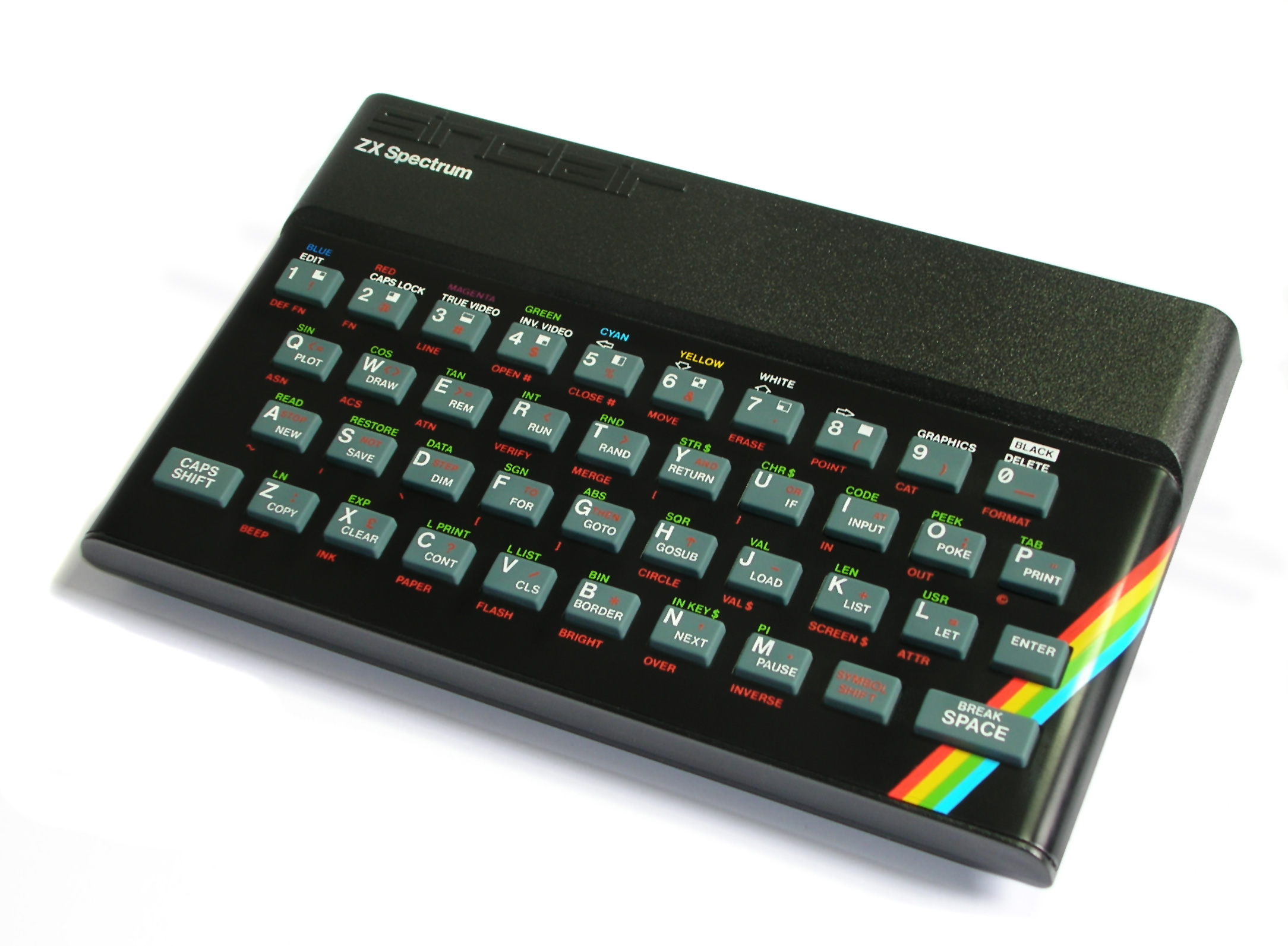 Sinclair ZX SpectrumHowever, the range of application of this microprocessor was much wider. In particular, it is he who is the “brain” of the French Exocet anti-ship missiles (in 1982, the Argentine Mirage fighter sunk the English destroyer Sheffield, one of the most modern warships at that time).The Zilog Z80 processor not only became incredibly popular after entering the market, but also proved to be a long-lived record holder - for decades it has been present in various systems as one of the specialized microprocessors, used in computer, portable, and business systems of various levels and destinations. In the 80s, it became part of portable systems such as the Sharp PC-1500 and Cambridge Z88, and in the 90s it was used in engineering calculators of the TI-81 family from Texas Instruments.
Sinclair ZX SpectrumHowever, the range of application of this microprocessor was much wider. In particular, it is he who is the “brain” of the French Exocet anti-ship missiles (in 1982, the Argentine Mirage fighter sunk the English destroyer Sheffield, one of the most modern warships at that time).The Zilog Z80 processor not only became incredibly popular after entering the market, but also proved to be a long-lived record holder - for decades it has been present in various systems as one of the specialized microprocessors, used in computer, portable, and business systems of various levels and destinations. In the 80s, it became part of portable systems such as the Sharp PC-1500 and Cambridge Z88, and in the 90s it was used in engineering calculators of the TI-81 family from Texas Instruments. TI-81It was also used as a microprocessor of musical instruments (for example, the legendary Prophet-5 MIDI keyboard), and many embedded systems still contain a legendary microprocessor as part of their solutions.
TI-81It was also used as a microprocessor of musical instruments (for example, the legendary Prophet-5 MIDI keyboard), and many embedded systems still contain a legendary microprocessor as part of their solutions.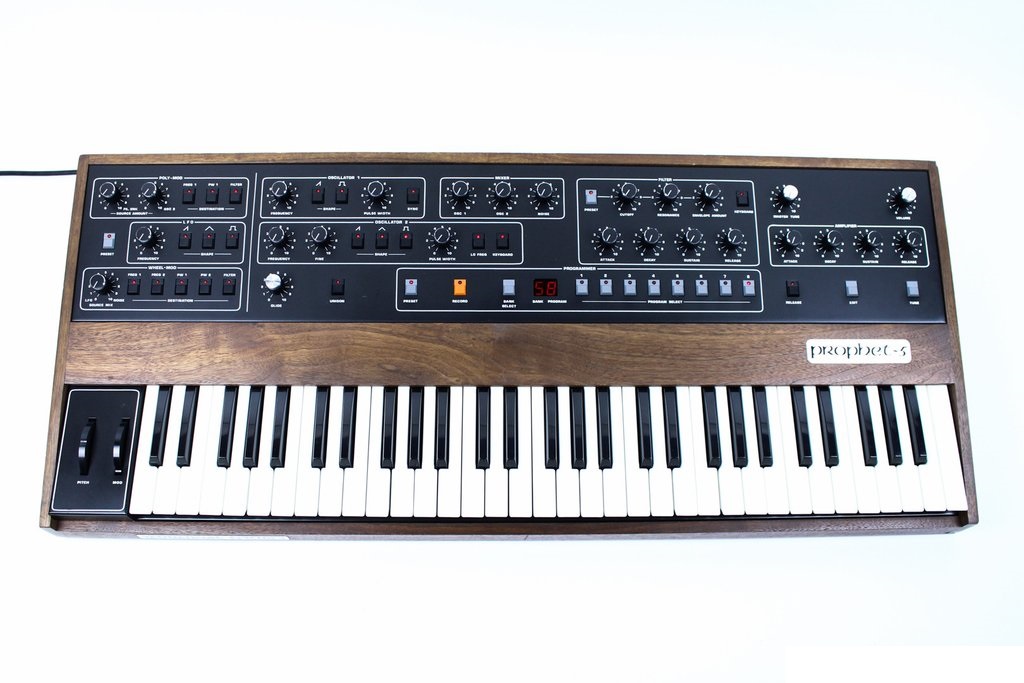 Prophet-5More than 40 years after its launch on the market, the Zilog Z80 has been and remains indispensable in dozens of different computer systems, and can serve as an example of how computer technology, which appeared at the dawn of the era of personal computers, is still part of our daily lives.Our video based on the article - TYK
Author of the article Alexander Lis.
Prophet-5More than 40 years after its launch on the market, the Zilog Z80 has been and remains indispensable in dozens of different computer systems, and can serve as an example of how computer technology, which appeared at the dawn of the era of personal computers, is still part of our daily lives.Our video based on the article - TYK
Author of the article Alexander Lis.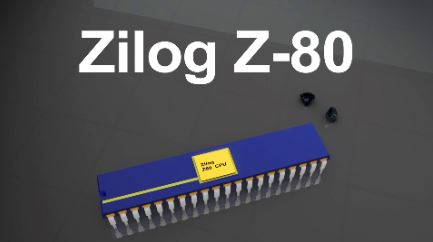
Source: https://habr.com/ru/post/undefined/
All Articles